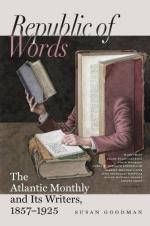These returns are therefore made with the utmost regularity and with the greatest care. But as the royalty of three per cent. to the Government is exacted on the amount of this return, whatever it may be, it is obvious that there exists no motive on the part of the miner to exaggerate the amount in making his statement. We may be as sure that his exhibit of the gold admitted to have been extracted by him does not, at any rate, exceed the amount obtained, as that the invoices of importations entered at the Custom-House in Boston do not overstate the value of the goods to which they refer. The practice is generally suspected, at least, to tend in quite the opposite direction.
As the next step for ascertaining the yield of the mines, there comes in a form of scrutiny which it would be still more difficult to evade. All owners of quartz-mills are also required to render official returns under oath, and in a form minutely prescribed by the Provincial law, of all quartz crushed by them during the month, stating particularly from what mine it was raised, for whose account it has been crushed, and what was the exact quantity in ounces, pennyweights, and grains. And this is designed also as a check on the miner, as the two statements, if correct, will be found, of course, to balance each other.
The Chief Gold-Commissioner resides in Halifax, and has his deputy in each gold-district, whose duty it is, as a sworn officer of the Government, to see that the provisions of the law are carried out; and the returns, as collected, are duly made by him each month, accompanied by a general report on the industrial condition of the district represented. It is from these returns, thus collected, that the Gold-Commissioner-in-Chief prepares a quarterly exhibit, which he issues on a broad sheet in a so-called “Royal Gazette.” The last of these documents issued was published by authority at Halifax, Wednesday, January 20th, 1864, and a copy thereof, ornamented at the head with the familiar lion and unicorn, is now lying with several of its predecessors on the table before us. If skeptics desire any better authority than this for the average yield of these mines, they must seek it elsewhere for themselves. By the majority of persons capable of judging of the value and weight of testimony, we presume it will be regarded as amply sufficient.
After this explanation of the official character of these returns, a transcript of the figures given in the last exhibit as the average yield of gold per ton of quartz crushed will be all we think necessary in answer to the inquiry we have proposed. We give them just as they stand in the returns for December, 1863, only premising that the relative yield of the several mines is found to vary very considerably from month to month, being at one time higher, and at other times again somewhat lower, and this from natural causes which have already been explained, while the total amounts, when taken together, exhibit a steady increase in the general yield of the whole. The figures stand as follows:—




